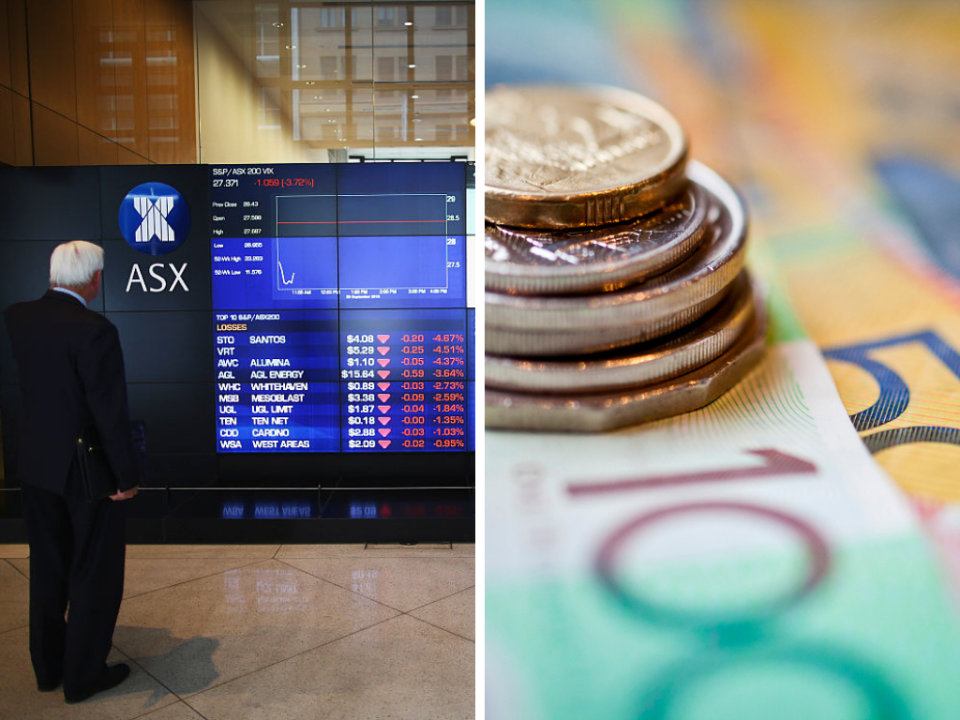What would rescue the Australian economy?

Both major parties have now shown their budget hand, and are now well into campaigning for the upcoming federal election.
The Coalition is promising a surplus next financial year, and tax cuts for low and middle-income earners struggling to meet everyday living expenses.
Labor is also promising to make life easier for low income earners, while pledging to beef up Medicare for those suffering from cancer.
But do these pledges get to the heart of what is fundamentally wrong with the Australian economy?
Let’s look into it a little bit.
China
I can’t tell you how many times sources have told me that Australia’s budget, and the fortunes of our economy, are dependent on China’s economy.
To put it bluntly, if China’s economy were to fall over tomorrow, make no mistake, Australia would slip into a long and protracted recession. The problem is a third of all our exports are absorbed by China. It’s impact on our economy is immense.
Recently, there’s been an increase in the revenue we receive from our exports due to a number of different factors, including less supply of iron ore coming from Brazil. It’s all led to the government being able to credibly forecast a budget surplus next financial year.
Should the government take credit for China’s increasing demand for Australia’s exports? At some level, yes. However much of it is just good fortune.
The real test for the government is how it spends the windfall.
The best way for the government to spend the extra cash is on vital infrastructure. You could argue it is doing that. The Coalition has also promised to spend $100 billion on roads and rail over a decade.
So what about the merits of tax cuts and offsets? Which is another way it’s ‘spending’ the extra money.
Well no one is going to argue with receiving a little extra cash from the tax office come the end of the financial year. However, the consistent message I’m getting from economists is that the tax system itself needs major reform.
There have been numerous royal commissions over the past two years. They have been vital for the community. What we also need is an official review of our tax system… so it works better, basically.
Wage growth
Nothing seems to budge wage growth these days! It’s incredibly frustrating for the hundreds of thousands of Australians who are prepared to work hard to get ahead.
The Coalition, and most business groups, argue in order to get wage growth (pay rises all round) we need to lift productivity. Traditionally productivity has been the way wage growth has lifted. And, as much as I hate to say it, official records of productivity have been stagnant now for some time. So, while the majority of workers may think they’ve boosted productivity, the data show they haven’t.
That said, businesses are increasingly profitable, so there is an argument to say it’s worth handing over more of the profit pie to workers. That should, fairly instantaneously, increase spending in the economy, which would boost overall growth, and perhaps allow increased business investment into the sorts of technologies that would help workers become more productive.
There’s always a smart way out of these problems.
The budget, however, I think, has its head in the sand on the wage growth problem.
The 2018/19 budget made optimistic forecasts about the growth of wages for Australian workers, forecasting a 3.25 per cent increase in 2019-20, up from 2 per cent.
This year’s budget forecasts that by June 2022, wages growth will be back at 3.5% annual growth.
Currently it’s nowhere near 3 per cent.
The obvious question here is, ‘how are wages going to rise if the unemployment rate, according to several financial institutions, is forecast to rise?’
As retail slows and the construction sector contracts, jobs growth will slow. It’s accepted wisdom that for wage growth to lift, along with increased productivity, the unemployment rate needs to be falling.
It’s one thing to debate how to lift wage growth, it’s another thing to pretend it’s going in the right direction and do nothing about it.
Politics trumps pragmatism
I’m sure you can see the conclusion I’m drawing.
Tax cuts for low and middle income Australians is brilliant policy, especially in a slowing economy where households are facing rising costs.
And financial relief for those suffering from cancer is also most welcome.
But where are the policies to safeguard Australia’s long-term financial position, and lift living standards?
Without strategies to ensure Australia can ride out another major global economic downturn, and workers can expect pay rises to keep them financially afloat and able to help build the economy, we’ll continue to muddle through.
Then again, we had a lot of luck this financial year, maybe the ‘lucky country’ we’ll continue to be just that.
@DaveTaylorNews
Make your money work with Yahoo Finance’s daily newsletter. Sign up here and stay on top of the latest money, property and tech news.

 Yahoo Finance
Yahoo Finance 